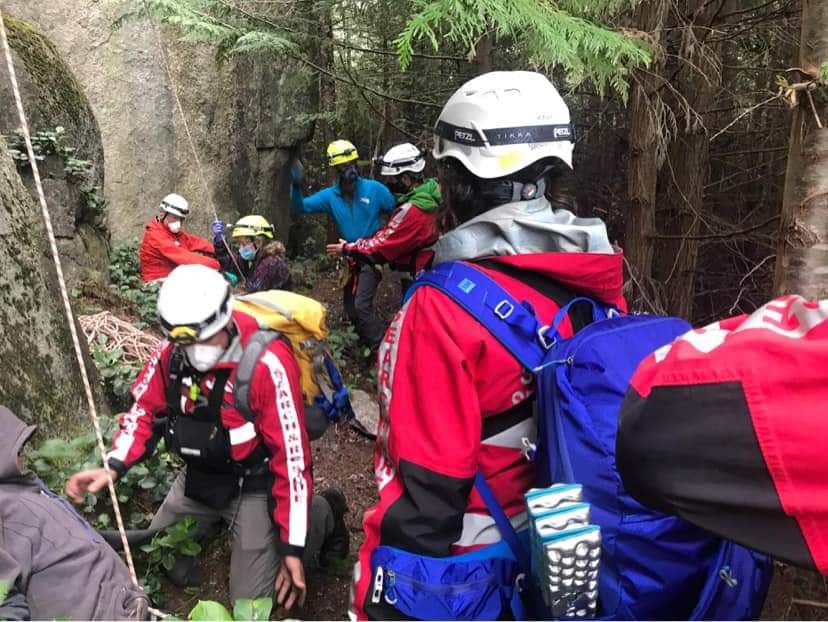Sunshine Coast Search and Rescue is having an unusually busy year, putting them in good company as SAR teams from across southern B.C. have been reporting a higher volume of calls.
Sunshine Coast SAR, which tracks its statistics on a May 1 to April 30 fiscal year, had already been called out 23 times as of Oct. 26.
The most recent call was to assist in the search for a pair of missing mushroom harvesters in the Pemberton area.
Alec Tebutt, Sunshine Coast SAR manager, said that’s already more calls than they get in a typical year, which would see the ground search and rescue team called out around 20 times.
Tebutt told Coast Reporter that more people have been heading out on the Sunshine Coast’s trails and backcountry routes, an increase that’s been noticed across the province.
“At the trailheads there are far more vehicles than there used to be, so we know lots and lots more people are out on the trails,” Tebutt said
Tebutt said, unlike some recent incidents on the North Shore, most hikers and day-trippers on the Coast have been well prepared, but with more people outdoors, more calls to assist when someone gets lost or hurt are inevitable.
Tebutt said there’s also been an increase in the number of calls to aid other search and rescue groups and more calls for “walk aways” – dementia patients who wander off or people who get despondent and head out without letting friends or family know.
“I think the stress level for people has gone up, and I think it is reflected in that,” he said. “It’s not a huge number more, but there are more.”
As well as being busier, Sunshine Coast Search and Rescue members have also had to learn new skills and develop new procedures to protect them and the people they’re called to assist from COVID.
Tebutt said the first call that required Sunshine Coast SAR to put COVID protocols in place was a serious ATV accident near Snake Bay in mid-April.
“That was a difficult rescue and it was pretty stressful,” Tebutt said. “The protocols are better understood now, there’s more knowledge and more understanding of what to do.”
Tebutt said search and rescue members have to wear masks and eye protection and “full GoreTex,” which offers the same protection as a hospital gown.
According to Tebutt, Sunshine Coast Search and Rescue members have been coping well with the extra work, and the calls so far have “pretty well all had good positive outcomes.”
He also said the volume of work is allowing new trainees to gain experience.
The province reimburses the volunteer group for expenses related to calls and for responding to certain types of calls, so the increase in activity isn’t putting any undue stress on Sunshine Coast Search and Rescue’s bottom line.
Tebutt said he expects more people may be heading outdoors through the fall and winter as well and they should remember to let someone know where they’re going, when they expect to be back, and stick to that plan and call their contact to let them know they’ve arrived back safely.
His other advice includes:
• Take a way of communicating with you. “Cellphones don’t work everywhere but they’re certainly better than not taking one.”
• Have some food and water with you.
• Carry a whistle and a flashlight, so you don’t have to use your cellphone battery.
• Have the right clothing in case you get stuck having to stay out overnight.



